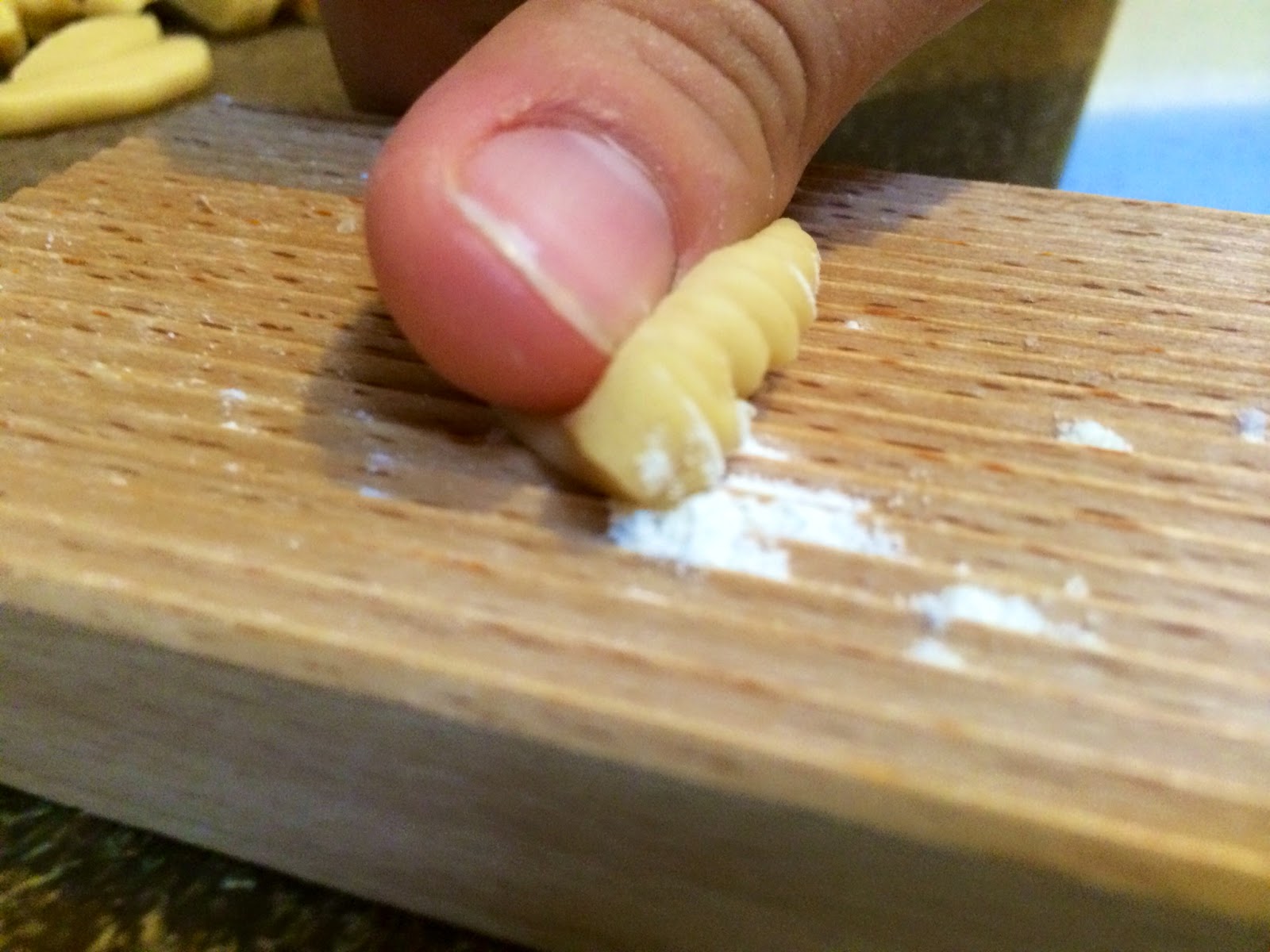The first skill that needs to be mastered is the dough, and with a simple ratio and a little practice, it's pretty simple. My favorite ratio when making pasta dough is 100 grams of flour to one egg. Almost every source online or in books will begin their pasta dough recipes with something like "make a mound of flour on a wooden tabletop and create a well in the center." While effective as a method of forming dough, this is an extremely messy technique and often discourages beginners because of the amount of practice it requires to avoid spilling egg on the floor. Instead, I make my pasta dough using an identical method, but in a large bowl with a flat bottom. This allows ample room to mix the dough just as I would on a table, but catches any run-off egg and incorporates it back into the dough.
Form a mound of dough and create a well in the center and add the egg, one tsp of olive oil and a pinch of salt. Beat the egg thoroughly with a fork and slowly incorporate the flour until it starts to look like a crumbly mess and can no longer be mixed with a fork. Knead the mixture with your hands until all of the flour is completely incorporated and a loose dough is formed. On a table top, continue kneading for ten minutes, until the dough is very smooth. You shouldn't need much flour during the kneading and the dough should be moist but not sticky at all. form the dough into a ball, wrap in plastic wrap, and allow the dough to rest at room temperature for thirty minutes.
After thirty minutes, unwrap the dough. when you poke it with your finger, it should leave a dent and not spring back. This means that the gluten has relaxed. To form cavatelli, start by rolling the dough out with your palms into a long, thin rope, then use a sharp knife to cut it into small pieces.
The pieces of dough can stick together, so it's a good idea to lightly flour the dough, your cavatelli board and the surface you'll be putting the finished cavatelli on. Take one piece of dough, place it on the cavatelli board and push down and foreward with your thumb to flatten the dough and roll it into a cylinder that is imprinted with the ridged pattern of the board.
For those who prefer a video demonstration
and once more in Slo-mo
Your finished product should look something like this
Now all you need to do is boil them in water for 5-10 minutes and serve them with your favorite sauce.
 |
| Hand-rolled cavatelli with vermont sharp cheddar, provolone and toasted panko (A.K.A. Super cheesy mac 'n' cheese) |





